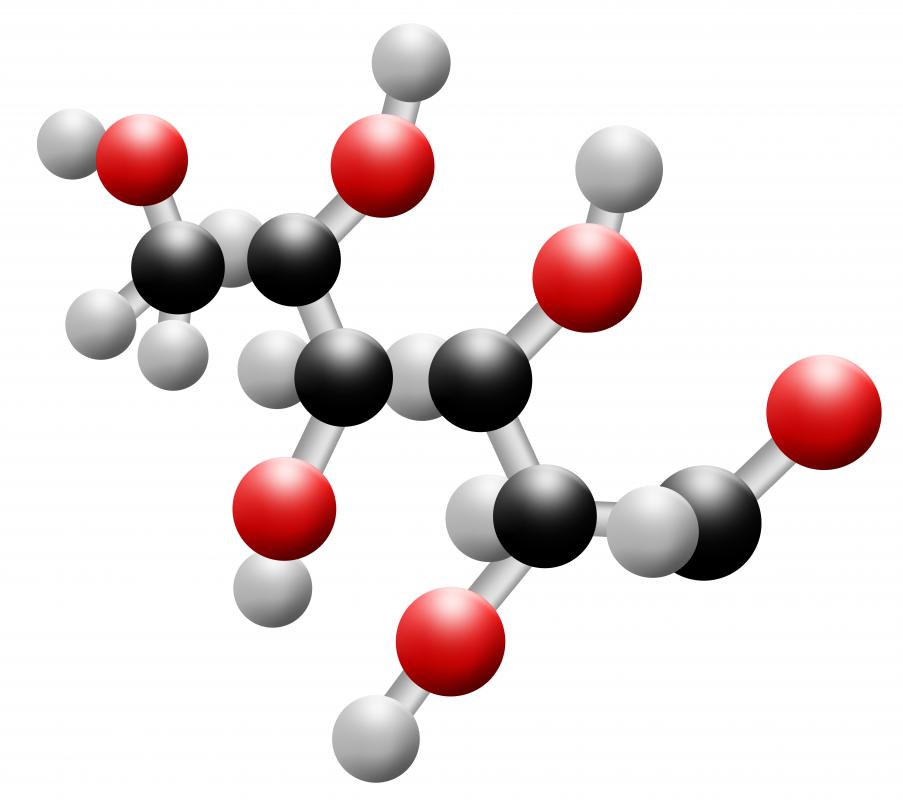At WiseGEEK, we're committed to delivering accurate, trustworthy information. Our expert-authored content is rigorously fact-checked and sourced from credible authorities. Discover how we uphold the highest standards in providing you with reliable knowledge.
What is Glycogenesis?
Glycogenesis is the body’s way of storing glucose in the form of a polysaccharide called glycogen. This is a long chain of glucose molecules that can be compactly stored in cells. The type of bond connecting the glucose molecules is very easily degraded, so glycogen can quickly be converted to glucose when blood sugar levels get low.
Glycogen is sometimes referred to as animal starch, and it is the body’s way of storing carbohydrates. It is a branched chain of thousands of units of glucose. While it is present in most tissues, it is found in the greatest concentrations in the liver and muscles.

Metabolism by the liver provides a buffer in blood glucose levels, ensuring that they remain stable. The amount of glycogen in the liver varies greatly, depending on how recently the person has eaten. It accumulates to high levels after a meal, then decreases as the body draws upon it for energy.
After a person eats, the pancreas produces insulin, which signals the liver to initiate glycogen synthesis. This process of glycogenesis begins with the enzyme glycogen synthase, which makes glycogen. It takes an activated molecule of glucose and adds it to the glycogen chain. This enzyme is very specific. It will form the glycogen backbone, but it will not make any of the branches.

A special branching enzyme is required to add branches to the growing chain. It requires a chain of at least 11 glucose units. Then it will make the appropriate linkage to cause branching in the chain. Once the branching linkage has been added, glycogen synthase adds glucose units to it. The branches provide a number of avenues for synthesis or degradation, compared to having only one straight chain.

If there is no more glycogen in the cell, there is a compound that can act as a primer, so that glycogenesis can proceed. A protein called glycogenin is thought to function as such a primer. It links glucose to part of its structure, and glycogen synthase can use that glucose as starting material to make the rest of the glycogen chain.
Part of the glycogenesis pathway includes the synthesis of the activated glucose that glycogen synthase uses to lengthen the chain. Glucose can move in and out of cells, but glucose-6-phosphate cannot. Thus, glucose is converted to glucose-6-phosphate. This compound is then converted to glucose-1-phosphate and then to the activated glucose unit, known as UDP-glucose.

Glycogen synthase exists in an active and an inactive form, since it is important that the enzyme not be active when glycogen is being degraded. The enzyme is regulated by the addition or removal of a phosphate group, which is known as phosphorylation. In its active form, it does not have a phosphate group on it. When a phosphate group is added, it becomes inactive. It can be phosphorylated by a number of different enzymes and has a complex mode of regulation.

An important factor in glycogenesis is that the initial enzyme that breaks down glycogen be inactivated once glycogen synthesis has started. This enzyme is known as glycogen phosphorylase, and also has a complex mode of regulation. In contrast to glycogen synthase, it is activated by phosphorylation.
The glycogen synthesis pathway in muscles has a different function than that in the liver. The glucose stored away is destined to be used within the muscles as an energy source. It does not enter the blood, like the glucose from glycogen stores in the liver.
AS FEATURED ON:
AS FEATURED ON:















Discuss this Article
Post your comments